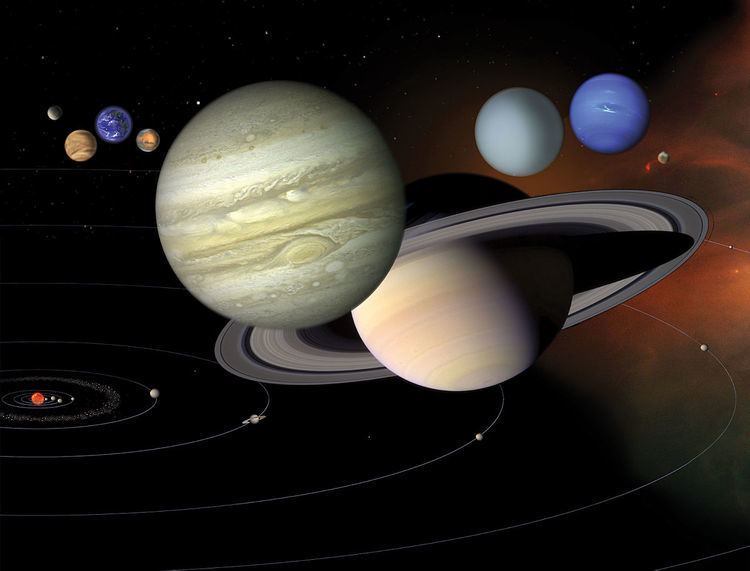 | ||
Gravitationally rounded objects in the Solar System have a rounded, ellipsoidal shape due to the forces of their own gravity (hydrostatic equilibrium) and their sizes range from dwarf planets and moons to the planets and the sun. This list does not include any small Solar System bodies, but it does a sample of planetary-mass objects whose shape has yet to be accurately determined. The Sun's orbital characteristics are listed in relation to the Galactic Center, while all other objects are listed in order of their distance from the Sun.
Contents
Sun
The Sun is a G-type main-sequence star. It contains almost 99.9 percent of all the mass in the Solar System.
Planets
A planet is defined according to the 2006 International Astronomical Union (IAU) definition; as a body in orbit around the Sun that was large enough to have achieved hydrostatic equilibrium and to have cleared the neighbourhood around its orbit. The practical meaning of "cleared the neighborhood" is that a planet is comparatively massive enough for its gravitation to control the orbits of all objects in its vicinity. By the IAU's definition, there are eight planets in the Solar System; four terrestrial planets (Mercury, Venus, Earth and Mars) and four giant planets, which can be divided further into two gas giants (Jupiter and Saturn) and two ice giants (Uranus and Neptune). When excluding the Sun, the four giant planets account for more than 99 percent of the mass of the Solar System.
Dwarf planets
The IAU, the internationally recognized authority for assigning designations to celestial bodies, defines dwarf planets as bodies that are large enough to have achieved hydrostatic equilibrium, but have not cleared their neighbourhoods of similar objects. Since 2008, there have been five dwarf planets recognized by the IAU. Ceres orbits in the asteroid belt, between the orbits of Mars and Jupiter. The others orbit beyond Neptune and are subclassified as plutoids.
Most-likely additional dwarf planets
These trans-Neptunian objects are theoretically large enough to be dwarf planets. Dozens more could have been included. Both Quaoar and Orcus have known moons that have allowed the mass of the systems to be determined. Both are more massive than the 5×1020 kg recommendation of the IAU 2006 draft proposal as sufficient for classification as a dwarf planet.
Satellites
There are 19 natural satellites in the Solar System that are known to be massive enough to be close to hydrostatic equilibrium, which Alan Stern calls satellite planets. However, several of these were once in equilibrium but are no longer: these include all of the moons listed for Saturn apart from Titan and Rhea. Other moons that were once in equilibrium but are no longer very round, such as Saturn's Phoebe, are not included. Satellites are listed first in order from the Sun, and second in order from their parent body.
